For the Adventuresome: Traversing Back in Time with Dr. Ed Keall
Posted: March 12, 2014 - 12:08 , by royal
Categories:
Ancient Cultures, Research, Archives |
Comments () | Comment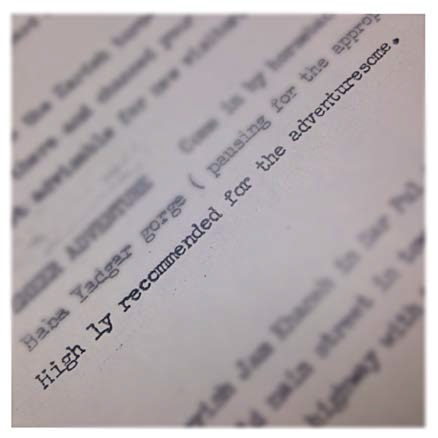
By Daira Szostak
It was a muggy, August afternoon when I met with Dr. Keall to discuss his plans for a new project. Sitting across from him in the dim bar, it felt like a spy movie where I was being enlisted for a covert mission. Details were few. I was familiar with the castle he spoke of, Qalʼeh-i Yazdigird, from past coursework, but now I was to delve into the archives of its excavation. Keall informed me there were twenty or so boxes that had not been touched in decades. I was invited to the museum the next week to assess the situation for myself. Keall jokingly referred to the experience as “entering the chaos.” It would be my responsibility to make some sense of order out of the materials over the coming months.
I knew I would have to assemble a crack team to get everything organized, and in my appeals to the archiving community, I met Nicole Marcogliese. Nicole is in the process of earning her Masterʼs of Information and Museum Studies at the University of Torontoʼs iSchool. We are classmates as I am working toward my Museum Studies degree as well.
Nicole and I knew we had a unique collection on our hands. It was truly as though we had opened a vault into the past. It wasn't the Parthian Empire of Ancient Iran; instead, we found ourselves immersed in the story of campsite life at Qalʼeh-i Yazdigird in the 1970s.
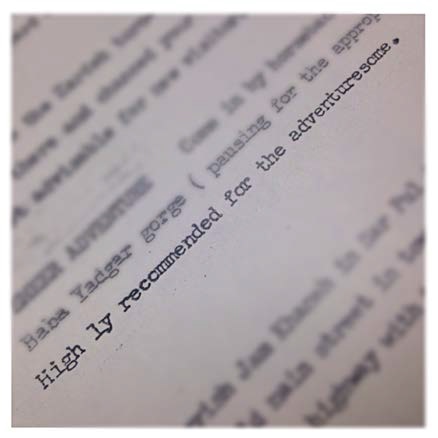
One of the first items we uncovered was a document outlining the routes one might take to access the isolated castle on the Silk Road. There were your standard methods, such as public transport or renting a car. The final suggestion was a horseback voyage through the high desert, and this type journey was “highly recommended for the adventuresome,” inspiring the title of this post.
We invite you to follow our present adventure into the Qalʼeh-i Yazdigird archives, by highlighting key pieces that we have selected to best embody the spirit of the expedition. They are detailed below with some of our commentary. As the ROM approaches its centennial, we felt it was important to inform the public about one of the museumʼs projects from a personal perspective, and give the readers an inside look at what archaeology in Western Iran was like just prior to the Iranian Revolution. Team Keall is in the process of putting together a webpage to share more about this fascinating Persian castle, so stay tuned for further information!
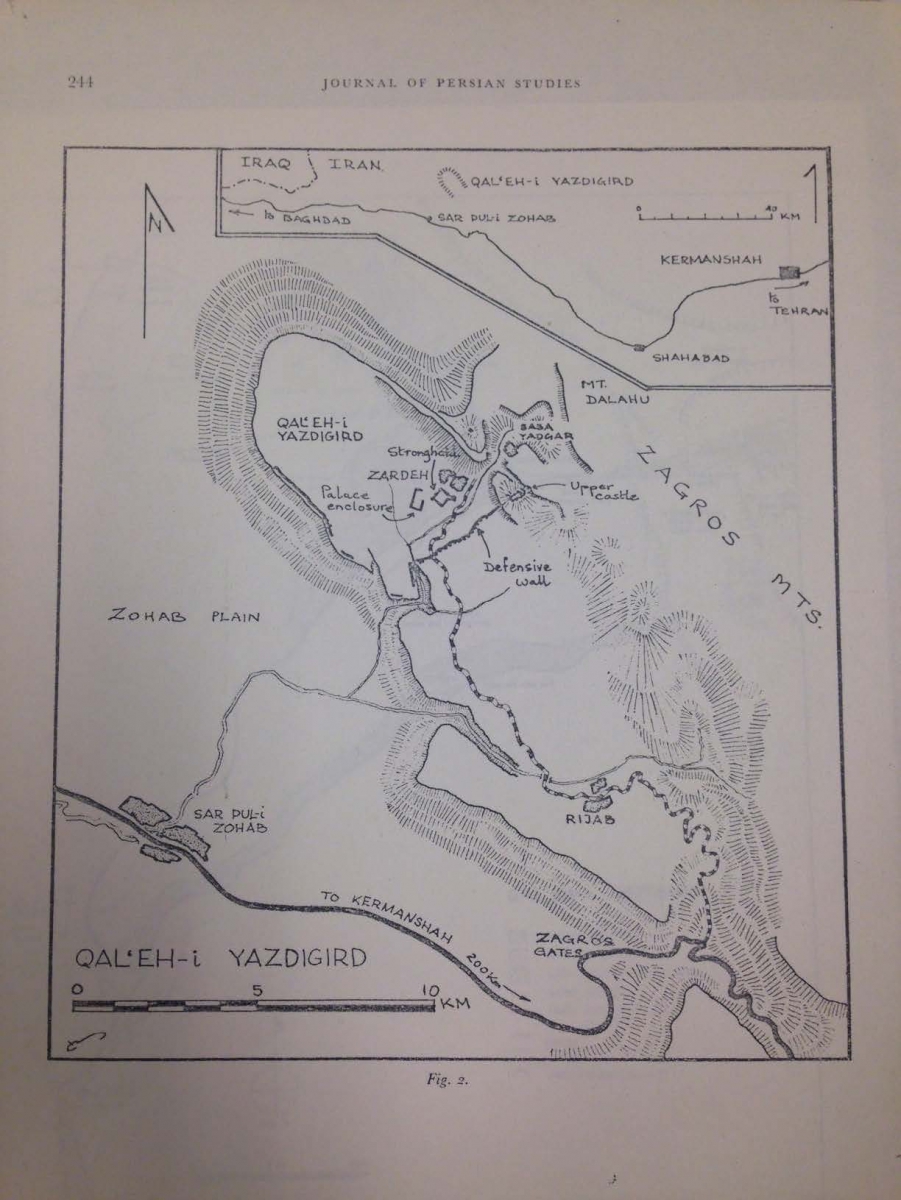
Above is a map of major archaeological and landscape features at Qalʼeh-i Yazdigird. The top-right inlay shows the site in proximity to Tehran, the capital of Iran.
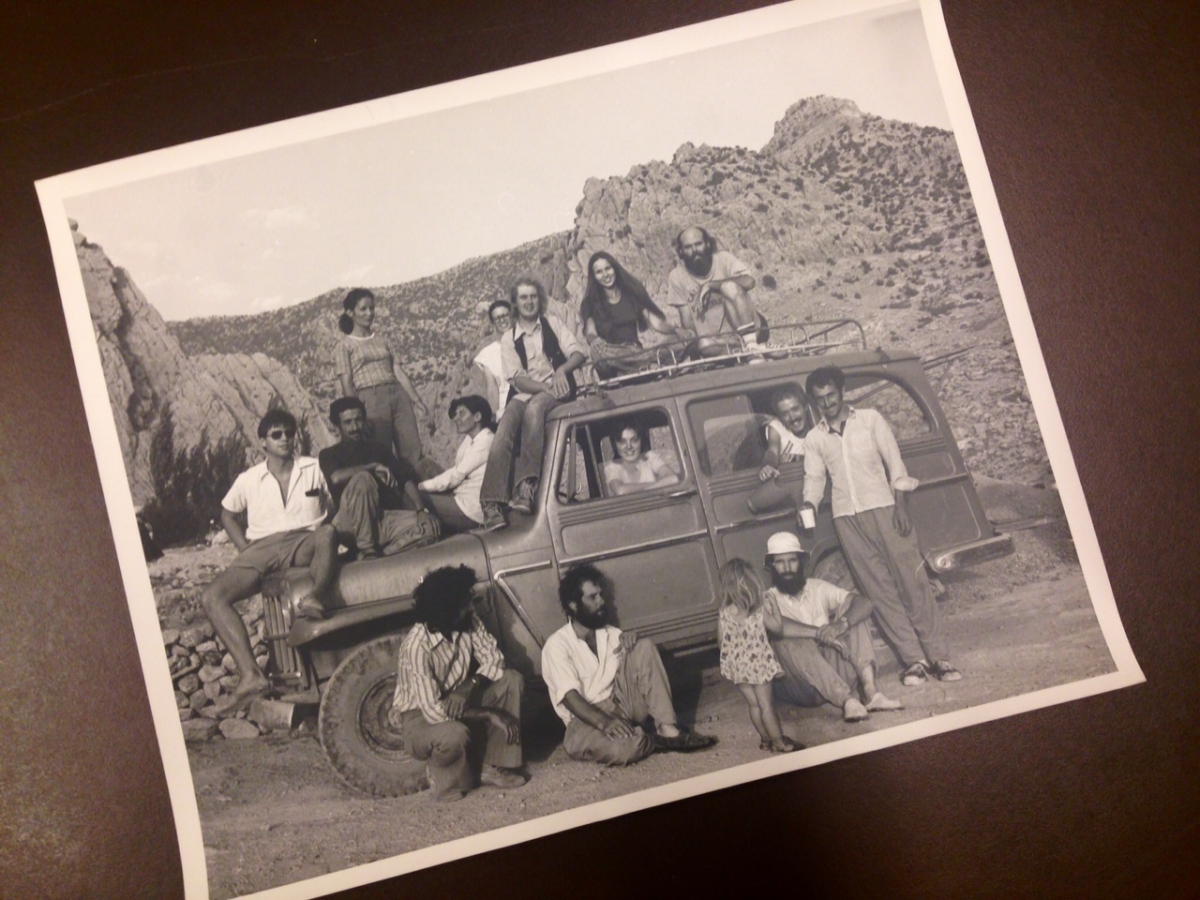
This photograph introduces the cast of characters. Dr. Keall is front and centre. The picture was taken during the summer season of excavation in 1976. We really got a kick out of the styles back then, and the awesome beards!
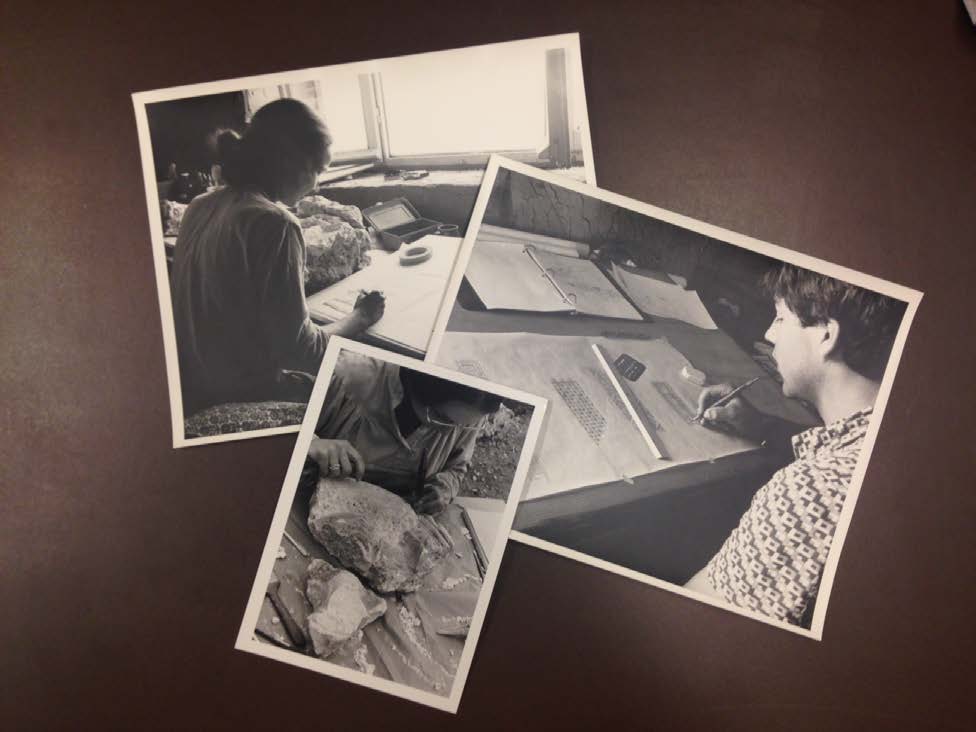
These are more pictures of the team hard at work making sketches and using a chisel to remove excess materials.
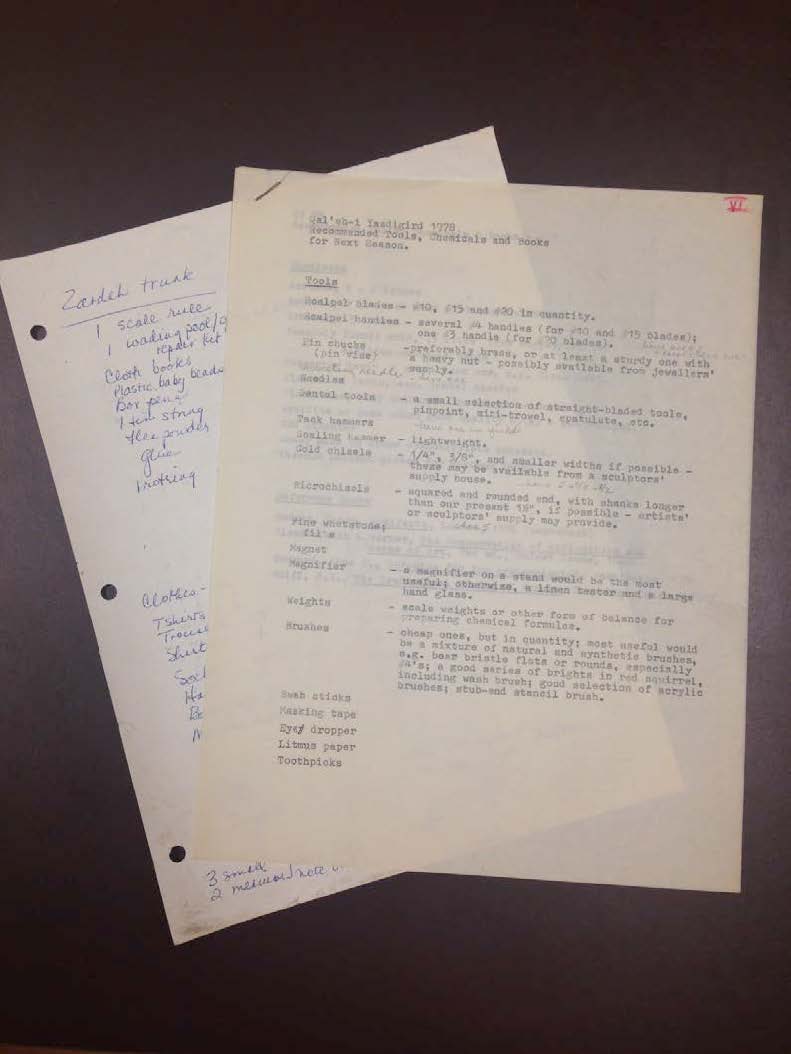
These supply lists allowed us to get a better idea of what resources were available to the team. They had tools like scalpel blades, tack hammers, weights, brushes, tape and litmus paper. Chemicals onsite included acetone, ethanol, and various adhesives. The list even let us know how many pair of trousers Dr. Keall was allotted for the season! These lists are certainly important to understanding what life was like during excavations and what kind of work was being performed.
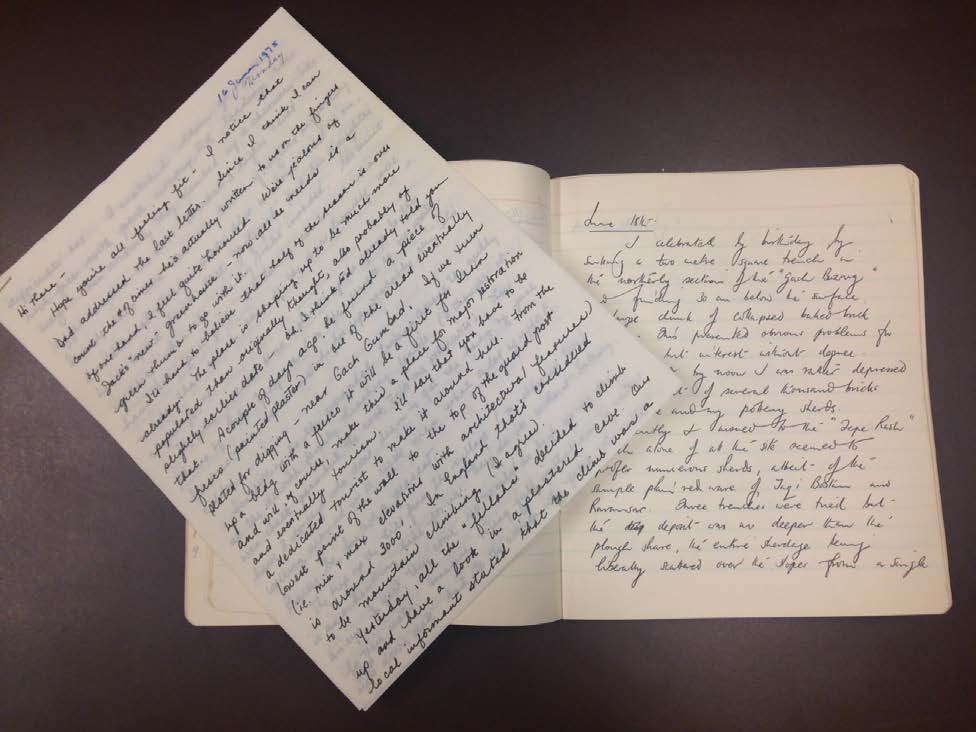
Letters, diaries and other forms of written correspondence are a true treasure in this project. Reading these documents has made the project come alive for us with their strong narrative tone and intimate nature. The letters home leave clues about how the atmosphere is changing in Iran as the Revolution approaches, and the diary gives a sense of daily life on site. This entry details how Dr. Keall celebrated one of his birthdays digging in a new trench. Now that is the kind of gift an archaeologist gives himself!
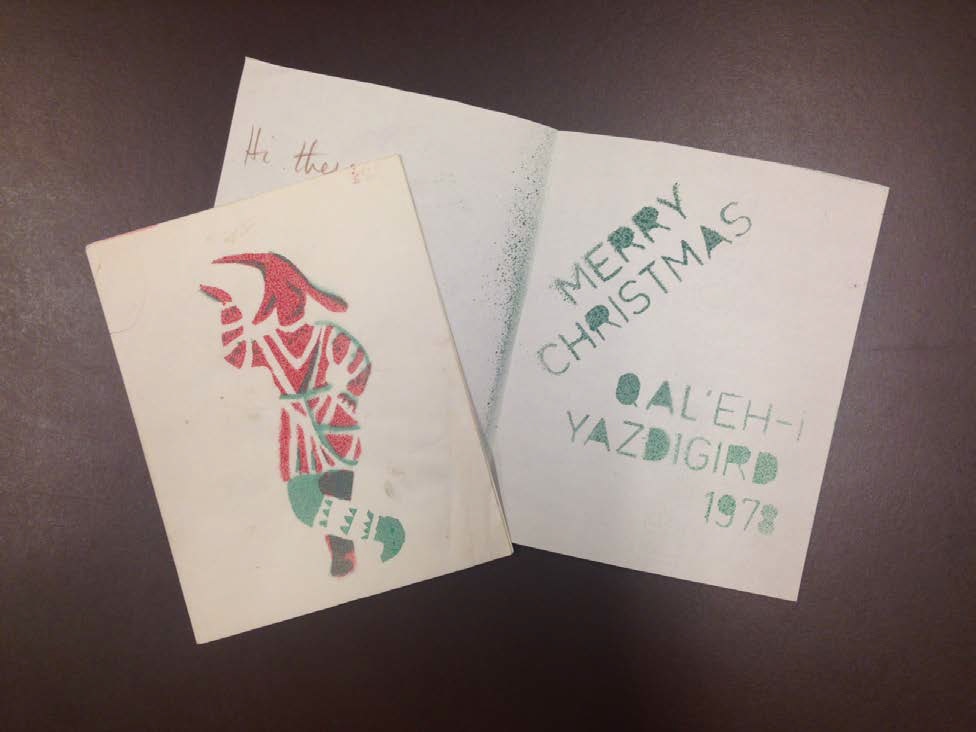
If the correspondence is considered as treasure within the collection, these Christmas cards are the prized jewel. The stamped image is a reproduction of the ʻParthian Hat Manʼ who appears in relief as an architectural decoration at Qalʼeh-i Yazdigird. The figure has been done red and green especially for the holidays. These cards were handcrafted, and sent home to spread well wishes to friends and family while the team was away in Iran.
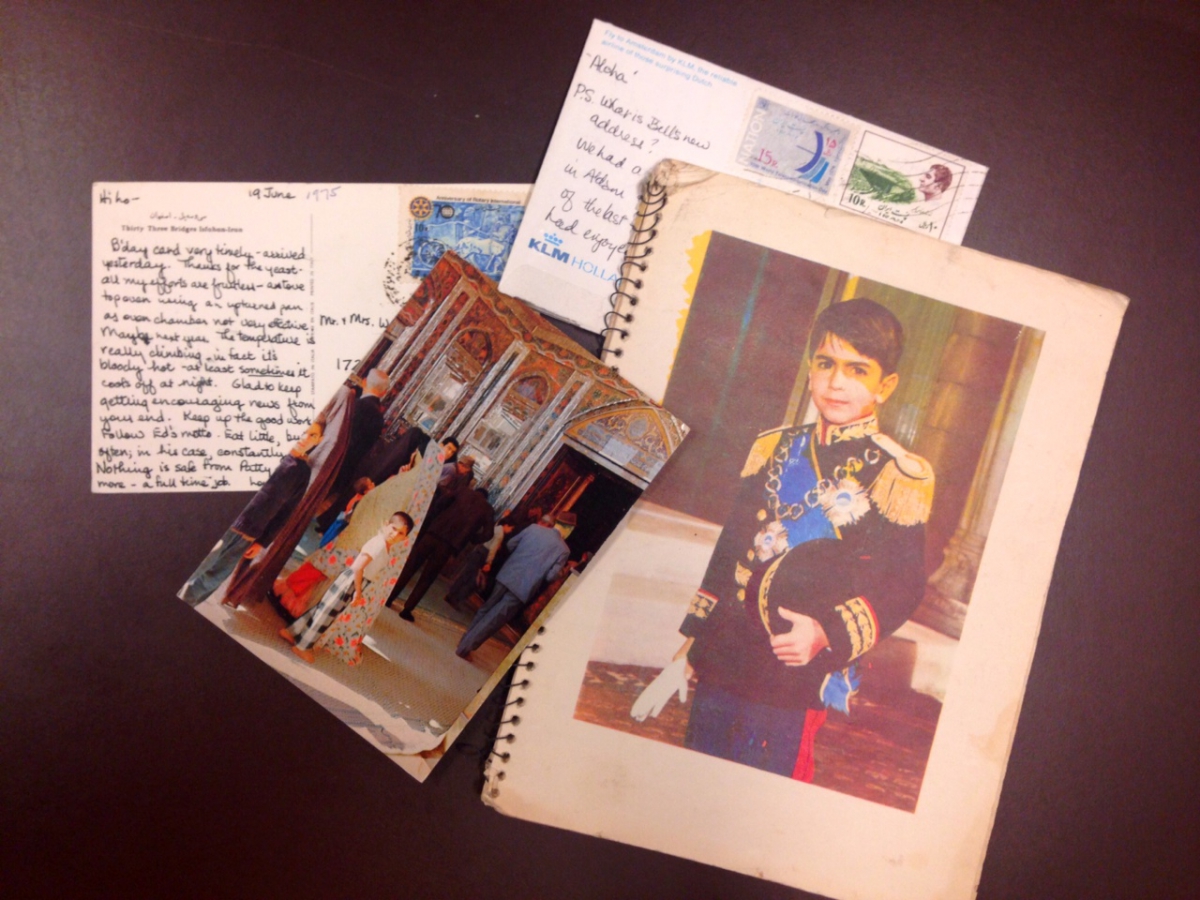
These postcards, stamps and notebook (from left to right) are special because they represent Iranian culture at a pivotal moment in the countryʼs history, and help situate the excavation in its environs. This notebook features an image of the son of the Shah, Reza Pahlavi, in military garb and it was purchased in the nearby city of Kermanshah. The monarchy is displayed on the stamps, and the postcard depicts a young boy visiting the local suq, or marketplace.
